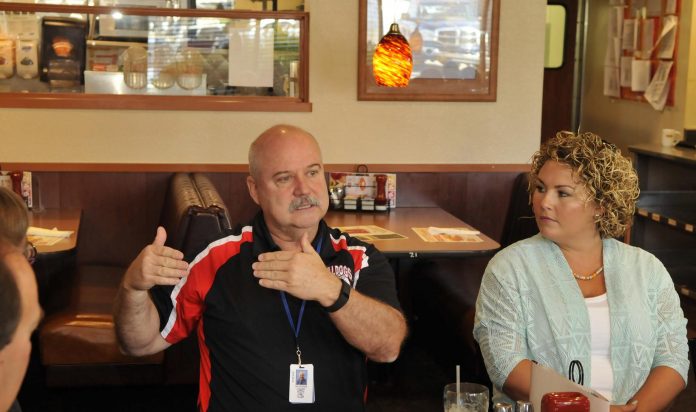Camp Verde Unified School District Superintendent Dennis Goodwin is unequivocal in his denouncement of the four-day school week model the district has used since the 2014-15 school year.
As evidenced by a Thursday, June 2, address to the Camp Verde Chamber of Commerce, he is also not shy about expressing his plans to go back to a five-day week and expand the number of classroom days per year.
“They always tell you not to make any big changes the first year,” Goodwin said. “I threw that out the window …. I think going to a four-day week hurt the kids, and I’m a fan of year-round school. I’d like to have the kids in school for 200 days a year.”
Goodwin said he would like to have the school year broken up into four 10-week quarters, with holiday breaks and a five-week summer break. According to him, retention of material falls off sharply after five weeks, so getting kids back into school is essential to keep them learning.
In a district where over 70 percent of the students qualify for free and reduced lunches and nearly 30 percent are defined as living in poverty, this arrangement would also ensure that kids are being fed daily.
Goodwin added that he has made this view clear to the CVUSD governing board and his staff, and that plans are moving forward to implement the change.
“It’s part of the planning,” Goodwin said. “I’m expecting to go to a a five-day week in 2017-18, for either 180 days or 200 days per year — that’s up for debate.”
According to Goodwin, moving to a year-round model would increase funding, though he did not provide specific numbers.
The superintendent admitted that CVUSD faced challenges in both the near and long-term. Apart from teaching students whose lives are impacted by poverty and social issues associated with poverty, Goodwin said that the district is growing faster than any in the Verde Valley.
Though benefiting from the current-year funding model, which calculates funding based upon the district’s current enrollment, Camp Verde High School will need to expand its facilities in the “next three to four years” to accommodate students.
In that same time period, CVUSD will require three to four new school buses at approximately $120,000 a piece.
The demands of a technological job market, as well, put pressure upon administrators and teaching staff to make sure computers and even tablets are incorporated into instruction. As a result, Goodwin said that within two years every student at the high school will be using a Chromebook daily.
“This is the world they’re walking into,” Goodwin explained, adding that “blended learning” environments — where students learn both from teachers and on online courses — is increasingly common.
The passing of Proposition 123 last month will infuse some money into the equation, Goodwin said, but ultimately the situation remains grim for Arizona.
“Prior to Prop. 123, we were 49th in the nation in funding. After Prop. 123, we’re still 49th in the nation in funding.”
Comparing CVUSD to the district he came from in Minnesota, Goodwin said that he now has over 700 more students to account for with roughly the same funds allocated. Making matters more complicated are the rising costs of students with developmental challenges.
“We’re finding that our special education numbers are going up significantly,” Goodwin said. “It’s my philosophy not to turn them away.”



